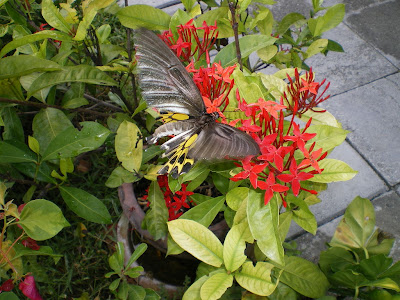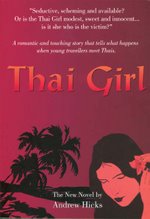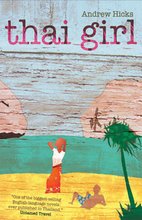





Yesterday... The sky's looking as black as thunder so I'm going to post these pics before it all crashes!
Today... I’m now writing this the following day, and yes, it was the mother and father of all storms last night. First there was the wind in the trees, then a more consistent noise which was the sound of rain drops cascading onto the foliage, marching ever closer. And then it hit us. The sky was now black and the heavens opened.
We sat on the verandah downstairs and ate, watching the drops pounding the ground and splashing up in the air in a foot or two of mist. I checked the house for leaks and yes, there were some trickles into the garage and the porch at the front so today I’ll be up there with my silicone gun once more. Thai plumbing and roofs always leak and nobody seems in the least bit surprised!
When the rain had almost stopped I put on boots and walked down to the end of our land by the wooden house and waded through our newly acquired lake. My aim was to clear out the gulley that drains water into the sugar cane next door. As I bent down to scrape away some leaves, my glasses fell from my top pocket and were swept away in the torrent. It wasn’t until next day that I found them, though it wasn’t quite like the rapids we’d just seen in southern Laos!
And now for the last bit of our holiday trip to Laos…
Finally after the Bolaven Plateau and Wat Phu in Champasak province, we made it down to the far south of Laos where the river Mekhong thunders through rapids thirteen miles wide before leveling out to cross the plains of Cambodia before reaching Phnom Penh and its vast delta region in Vietnam.
Our destination was to be Don Khone, one of many tiny islands only a few feet above the ovaltine flood waters where an intimate backpacker tourist scene of bamboo huts and bungalows has recently sprung up. It’s pretty small… the Lonely Planet tells me the island is 18 by 8 kilometers at its widest and has 13,000 inhabitants so it certainly is sleepy and intimate.
We were put in a narrow river craft and swept at speed across the water for twenty minutes before arriving at our idyllic tropical hideaway. We stayed at Pan’s Guest House, six delightful wooden rooms with clean modern toilets set up by the water among the palm trees, a hint of paradise for a few hundred baht. There’s nothing much else there, not even mains electricity but the generator runs and powers the lights and fan in the evening and the surroundings are truly beautiful.
Next to the rooms is a fine brick and cement shop house about a hundred years old, the only building of masonry, except for the old French colonial school, clinic and resident’s house. Mr Pan told me the story of his family’s lovely old house. His wife’s male forebears had been Vietnamese in the French colonial army and had been posted to the island. Presumably one of them had married a local girl and built this high status building which the family now still occupies.
I asked Mr Pan about his excellent English and he told me he had previously been a tuk-tuk driver in Pakse and for three years had gone to night school to study. Other Lao people working with tourists spoke equally good English and I always wonder why the Thais seem to find our language so very difficult to get to grips with. But I digress a little!
In the nineteenth century, the French colonists occupying what are now Vietnam, Cambodia and Laos, Indo-China as they called it, were hungry to expand their influence and dreamed of making the river Mekhong a super-highway into the region, possibly linking up with and trading with southern China. Expeditions were launched up the river but it was when they got to the Mekhong rapids where we were now staying that they realized the dream could not be fully realized.
In the spirit of the colonial age, they did not totally give up on the idea of trade however. They conceived a scheme to trans-ship goods across the rapids by means of a railway running between our island and the next one, called Don Det. Thus ships coming down stream would off-load at a wharf at Don Det and load the cargo onto the train. This would then chuff down the railway, across a fine arched bridge to Don Khone and to the wharf downriver where it would be unloaded onto ships headed for Cambodia and Vietnam. So far as I know the project was a relative success and was even used by the occupying Japanese until it fell into disuse at the end of the Second World War. Now all the track is gone but the basic infrastructure is still there.
Poignantly a French locomotive stands rusting for all to see. The track beds are still intact and the superb many-arched bridge, presumably unmaintained for half a century, looks to be in fine condition, a tribute to its builders. It’s now just a curiosity for tourists, but with trade on the river growing, especially in the upper reaches between China and Thailand, one wonders if the railway scheme could have a renaissance. Road routes into Cambodia and northwards are poor and an unbroken river artery could be a fine stimulus to trade.
Our days were spent exploring the railway on hired bicycles, finding the old resident’s house, now a guest house, wandering through the villages, admiring the old temple with its ancient Khmer pavings and stones scattered around and sheltering for drinks and noodles every time a heavy shower came through.
Most exciting of all we headed for the rapids where we watched the brown waters thundering over the rocks in a devastating display of nature’s might. Here at Li Phii are some substantial bamboo fish traps and an old man explained to Cat that when the conditions are right, they can scoop up large quantities of fish.
The name, Li Phii, loosely translated means the ‘haunted fish traps’ which is explained by the fact that during the Indo-Chinese wars, many corpses came down the river and often they would end up caught in them. This was again explained by the old man, though I’m not mentioning how he referred to the enemy in the skies as this would offend American readers.
Thankfully, apart from the thunder of the falls, this must now be one of the most quiet and serene places in the world, free of trucks and cars and modern development and even of mains electricity. Life is dominated by fishing and the eternal cycle of the rice harvest where ploughing is still mainly done with buffaloes. In Surin, I’ve been collecting buffalo harrows as museum pieces, but here they are still in use.
In the morning as we breakfasted in the old shop house, we watched as the kids and adults came pouring into a wooden shack across the way. I thought nothing of it until later they all came pouring out again, chatting in excitement. Cat explained this to me as something from her own childhood… they had all gone inside to pay a few Kip and watch the only telly in town.
Finally we said goodbye to Mr Pan and took the boat back to the mainland before briefly heading further south to Khon Phapeng Falls. These must be the biggest falls in South East Asia and this particular day after some of the heaviest rains of recent times with the waters of the Mekhong swollen to a high level, they were quite spectacular. The river rises 4,350 kilometers away in the Tibetan plateau and because of its sheer size is a major feature of this part of the world. Access to its waters is a critical source of potential friction and conflict. Many controversies surround it as the Chinese are constructing several dams on its upper reaches, constricting the flow of water downstream.
Some months back in the dry season when we looked down on the river from the cliffs at Pha Taem in Thailand, we saw mainly rocks and only a modest flow of water. The river was at its lowest for years with serious consequences. Now a few months later with the river in spate, it was difficult to reconcile these as one and the same river. Nothing I have ever seen in a life time of waterfalls has had the sheer arrogant power of these falls at Four Thousand Islands hidden down in the south of Laos.





























